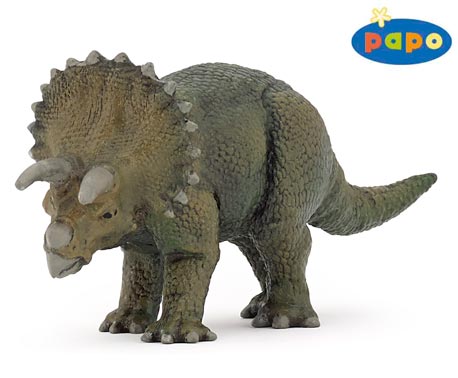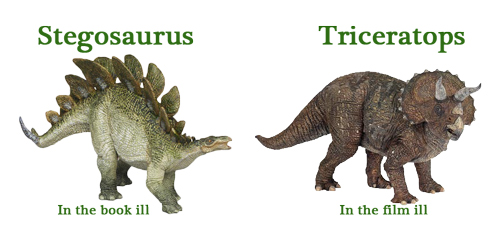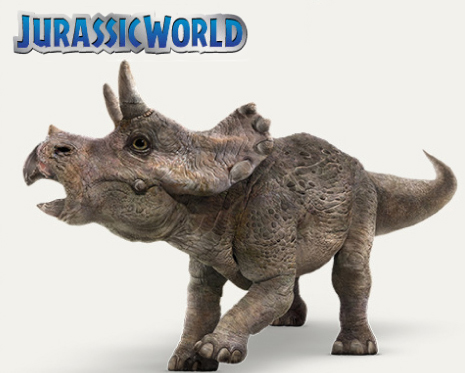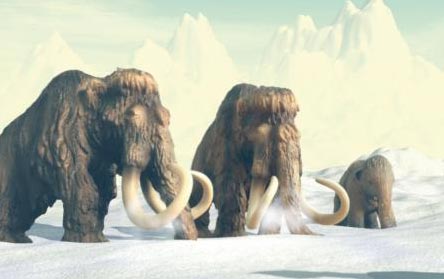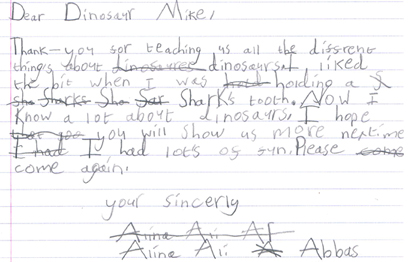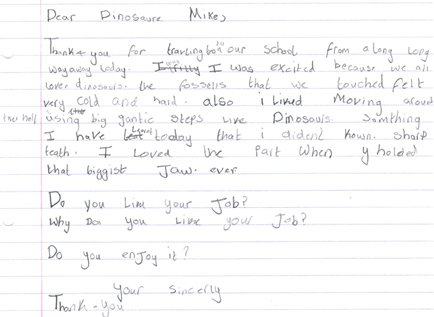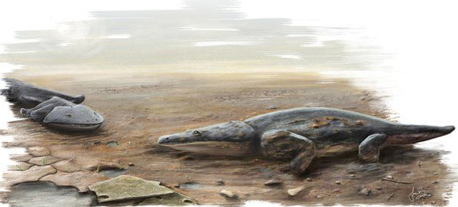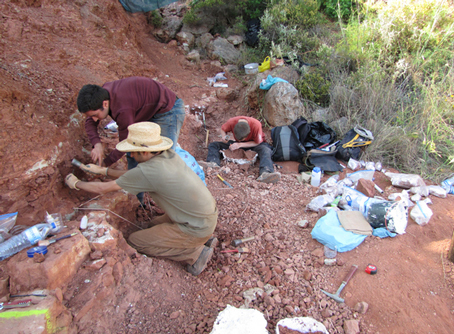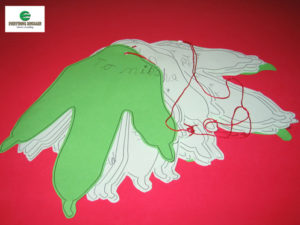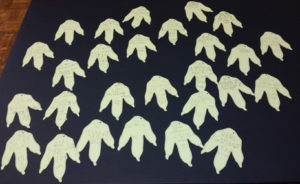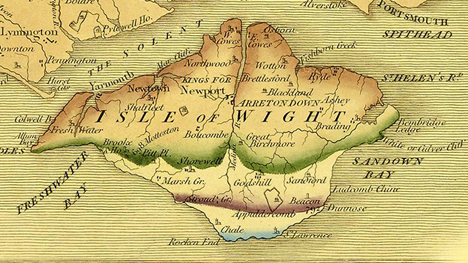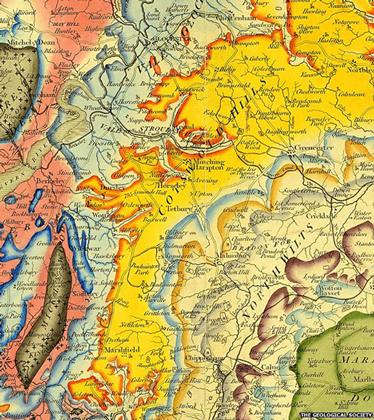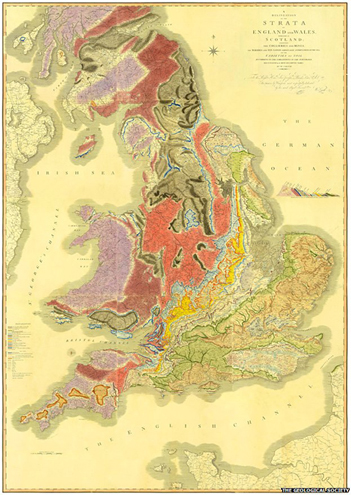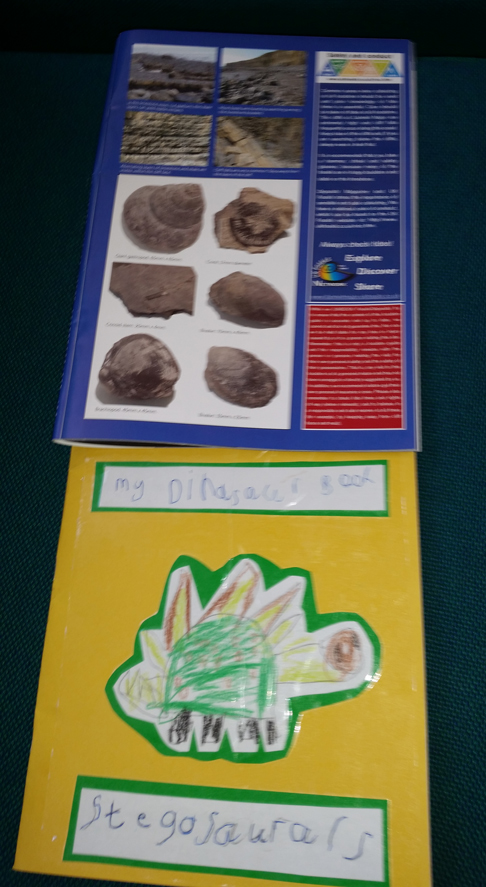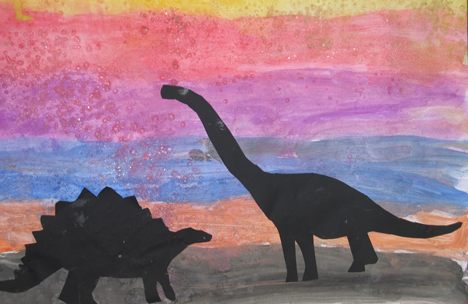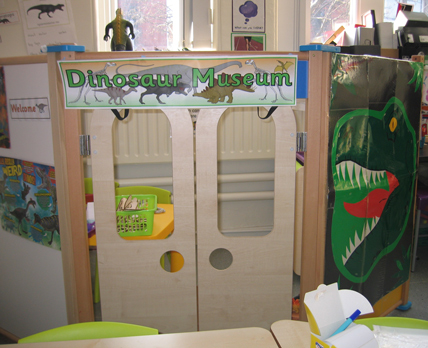The Prehistoric Animals of Jurassic World – Triceratops
The Triceratops Dinosaur and Jurassic Park (Jurassic World)
In this occasional series, team members at Everything Dinosaur are writing about some of the dinosaurs that appear in the “Jurassic Park” movie franchise. Today, we feature Triceratops, an ever present in our annual survey of the top-ten prehistoric animals and one of the first dinosaurs to be seen in the original Jurassic Park film, which came out in 1993. Triceratops is indeed, one of the most easily recognised and popular of all the Dinosauria . Those three horns (Triceratops means “three horned face”), and the large body make Triceratops very easy to spot.
Triceratops
Two species are recognised, the largest being T. horridus, although it is possible that the genus may well be revised again and further species added. In a recent scientific paper the evolutionary development of this genus was traced using fossils extracted from the famous Hell Creek Formation. We at Everything Dinosaur also believe that Triceratops fossil material has also been excavated from Maastrichtian faunal stage deposits in Alberta and Saskatchewan (Canada).
To read more about the Hell Creek Formation (Montana) studies: How Triceratops Got Its Horns and Beak.
Triceratops – A Very Popular Dinosaur
Picture credit: Everything Dinosaur
Triceratops is one of the first dinosaurs to be clearly seen in the original Jurassic Park movie, whilst touring the park in their custom built Jeeps, Dr. Grant’s party spot a downed Triceratops and interrupt the planned itinerary to investigate why this huge herbivore has collapsed.
A Sickly Triceratops is Examined Why is She Down?
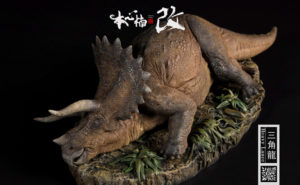
A replica of a sick Triceratops a dinosaur model influenced by a scene from the 1993 movie “Jurassic Park”.
The Triceratops Sickness Mystery
Amongst the many curiosities to be found in “Jurassic Park”, there is the bizarre case of the collapsed Triceratops. It is one of the very first dinosaurs that viewers get to see up close (wonderful puppetry from Stan Winston Studios), but in the film, the reason for the ill Triceratops is never really explained
Dr Ellie Sattler (played by Laura Dern), spots the animal’s dilated pupil when a torch is shone at the eye and in conjunction with the numerous microvesicles (blisters) seen on the tongue, hits upon the notion that the cause of the sick dinosaur is something “pharmacological”. Attending the incapacitated animal is Dr Gerry Harding, the Park’s chief veterinarian, (played by Gerald R. Molen, who incidentally was also a producer for the film). Dr Harding explains that these animals fall sick every six weeks or so, but in the film the mysterious illness is never identified.
Dr Sattler suspects that these herbivores may have ingested some poisonous plant material. She looks at the nearby vegetation and spots some fruiting West Indian Lilac (Tetrazygia bicolor). These berries are poisonous, so cue Dr Sattler to explore a huge pile of “dino dung” up to her armpit to see if the Triceratops had eaten any of these berries. No berries are found and the viewer is left wondering what was the cause of the Triceratops’s regular bout of sickness, in the film this is not explained.
The Triceratops Illness Mystery (Jurassic Park 1993)
Picture credit: Everything Dinosaur
A Sick Stegosaurus
In Michael Crichton’s book, upon which the film is based, the sick dinosaur is not a Triceratops at all but a twenty-foot-long Stegosaurus. In the novel, it is suggested that this Late Jurassic herbivore was inadvertently swallowing berries along with stones to help grind up plant material in its gizzard (gastroliths), we are no experts on the digestive tracts of ornithischian dinosaurs but when it comes to teeth, the Triceratops, which just happened to have evolved some eighty-eight million years after Stegosaurus stenops lived, wins hands down over Stegosaurus.
Stegosaurs may well have swallowed stones to help them grind up their food, after all there were no flowering plants or succulent fruits of the angiosperms to dine on 155 million years ago. Triceratops however, being a Late Cretaceous ceratopsian possessed a jaw crammed full of square and blocky teeth, a veritable dental battery. What’s more, based on studies of the jaws and muscles surrounding those huge skulls, this dinosaur could probably chew its food.
The nine tonne Triceratops may not have needed to swallow stones to help its digestion. Earlier parrot-beaked dinosaurs (Ceratopsia) such as Psittacosaurus did use gastroliths, but as far as we at Everything Dinosaur know, polished stones have not been found in association with Triceratops fossils.
Why Show a Sick Triceratops?
So why show a sick Triceratops in the film at all? After all, the book features a Stegosaurus, an equally popular member of the Dinosauria. Michael Crichton is much more forthcoming than Steven Spielberg when it comes to dinosaur poisoning. In the book, the reader is told that the stones the Stegosaurus swallows are very near to the West Indian Lilac plants. As the dinosaur attempts to top up its “stomach stones” every six weeks or so, it accidentally picks up berries as well as small stones and ends up poisoning itself once again.
There are no such explanations provided in the movie, although the answer to the Triceratops poisoning mystery is briefly alluded to when Dr Sattler examines some small stones under a West Indian Lilac bush and holds them in her hand for a moment, but that’s all the viewers get.
Why the Triceratops Detour?
So why the detour from the scheduled itinerary to examine the poorly Triceratops? Conspiracy theorists have had a field day over this and here are some of the explanations that have been put forward:
- The film makers had to find a ploy that would enable the tour party to be delayed so that they could build up tension about the approaching storm that was to wreck havoc on the island.
- A scene in which the poisoning case is reasoned out by Dr Sattler was cut from the final movie.
- It gave an opportunity for the cast members to physically interact with one of the amazing dinosaur puppets.
- It allowed the audience to a learn a little more about the personalities of the characters such as the tenacity of Ellie Sattler, which was important for what was to follow in the rest of the film.
- It permitted Dr Ian Malcolm (played by Jeff Goldblum), more time to flirt with Dr Sattler, helping to build up tensions between three of the main characters.
Whatever the reason, the Triceratops scene does pose a conundrum, after all, why replace the Stegosaurus in the book with a Triceratops in the film? Perhaps, a Triceratops puppet was easier to make or looked more realistic.
Triceratops in “Jurassic World”
Expect to see Triceratops in the forthcoming “Jurassic World”, which premiers on the 12th June. At the theme park, there is an attraction called “Triceratops Territory”, although we could not find this on the Isla Nublar map. However, baby Triceratops can be stroked and even ridden at the “Gentle Giants Petting Zoo”, we also learn that these horned dinosaurs love getting scratched behind their huge neck frills.
Expect Triceratops to Appear in “Jurassic World”
Picture credit: Universal Studios
Triceratops remains a favourite dinosaur. In our surveys, it is liked equally by girls and boys. One of the best selling Triceratops models is the Papo Triceratops, this was joined last year by a replica of a baby Triceratops in the Papo dinosaur model range so young dinosaur fans can play out their own dinosaur petting zoo adventures.
To view the full range of Papo prehistoric animal models: Papo Prehistoric Animals.


